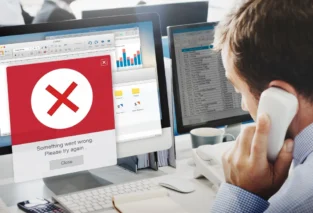
Launching an online course, especially in video format, is always exciting. But at the same time, if proper security measures are not in place during the first few days, your investment and effort could be at serious risk—from unauthorized copying to illegal distribution. The first 72 hours after launch are the most critical for controlling video security.
In this guide from VidProtect, we’ve prepared a step-by-step checklist that covers everything you need to do—from uploading your content to ensuring its secure release.
1. Preparing Your Videos Before Upload
- Secure Compression: Large file sizes not only make uploading difficult but also reduce security. Use software that optimizes file size while maintaining quality.
- Watermark Verification: Add a static or animated watermark before uploading. A unique watermark is your first layer of protection.
- Local Testing: Play a test version locally to confirm there are no issues with audio or video quality.
2. Choosing a Secure Hosting Platform
The hosting platform is the backbone of your course security.
- Avoid Public Platforms: Do not use open platforms like YouTube or Vimeo, as they carry high risks of copying.
- Prefer Specialized Learning Platforms: Use dedicated solutions such as VidProtect.
- Encryption: Ensure that videos are encrypted immediately upon upload.
3. Setting Initial Access Levels (First 48 Hours)
Right after uploading, your videos should not be publicly accessible.
- Restricted Access: Allow only your team members or selected testers to view the content.
- Link Protection: Never use direct links. Instead, generate temporary or expirable links.
- Security Test: Check if unauthorized users can access content when links are shared.
4. Adding Extra Security Layers
Before making your videos publicly available, implement additional safeguards:
- DRM (Digital Rights Management): Prevents illegal downloads.
- Dynamic Watermarks (Visual or Audio): Display the user’s name, email, or phone number during playback—one of the most effective ways to deter unauthorized sharing.
5. Pre-Launch Testing (24 Hours Before Official Release)
Conduct a limited release before the full launch.
- Team Feedback: Test across multiple devices (mobile, laptop, tablet).
- Playback Speed: Ensure smooth streaming without buffering.
- Security Check: Try common downloading or screen-recording tools to test vulnerabilities and patch them quickly.
6. Official Launch (Hour 0 to 72)
Now it’s time for the official release.
- Traffic Monitoring: Expect heavy traffic in the first hours; make sure your servers can handle the load.
- Real-Time Security Monitoring: Continuously monitor logs and access data. Block any suspicious IP addresses.
- User Reminders: Inform users that their access is personal and unauthorized distribution may lead to legal action.
7. Post-Launch Actions (After 72 Hours)
Once the first three days are over, you can focus on long-term measures:
- Data Analytics: Review user activity and behavior.
- Security Updates: Regularly update your protection tools.
- Violation Tracking: If you detect unauthorized copies, take immediate legal action.
Additional Tips for Stronger Protection
- Backups: Always maintain secure backup versions of your videos.
- Two-Factor Authentication: Enable 2FA for admins and sensitive accounts.
- Legal Agreements: Have NDA or non-disclosure agreements in place with users who require special access.
Meet VidProtect: Your Trusted Video Security Partner
To carry out all these steps effectively, you need a reliable tool. That’s exactly why VidProtect was created. Its standout features include:
- End-to-End Encryption to block any intrusion attempts.
- Dynamic Watermarking showing the user’s name, email, or phone number during playback.
- AI-Powered Protection to detect and stop hackers.
- Time-Limited, Trackable Links for complete control over sharing.
- Smart Reporting to analyze user behavior and flag suspicious activity.
Final Thoughts
The first 72 hours after launching your course are like the golden window of video security. If you implement all the right steps during this period, future risks will be significantly reduced. This checklist—from upload to secure release—will guide you through the process, and with a powerful tool like VidProtect, you can launch your course with peace of mind.




